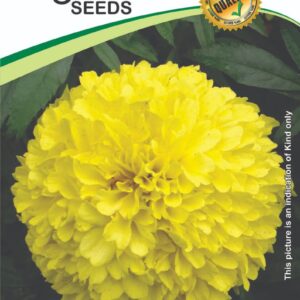Growing yellow zinnias follows similar steps to cultivating other zinnia varieties.
Here’s a guide specifically for yellow zinnias:
- Climate and Soil: Yellow zinnias, like other zinnia varieties, thrive in full sun and well-draining soil. They are adaptable but prefer moderately fertile soil.
- Planting Time: Sow yellow zinnia seeds directly into the garden after the last frost date in your area when the soil temperature is warm.
- Seed Starting: Plant zinnia seeds about ¼ to ½ inch deep in well-prepared soil. Space seeds according to the mature size of the plant, typically around 6 to 12 inches apart.
- Sunlight: Zinnias require full sun for at least 6 to 8 hours a day for proper growth and flowering. Ensure they receive adequate sunlight for optimal blooming.
- Watering: Water the seeds and young plants regularly until they establish a strong root system. Once established, zinnias are somewhat drought tolerant but benefit from regular watering during dry periods.
- Fertilization: Yellow zinnias, like other zinnia varieties, don’t require heavy feeding. Incorporating compost or a balanced fertilizer before planting can provide necessary nutrients.
- Height: Yellow zinnias can vary in height based on the specific variety, ranging from compact types (about 6 inches tall) to taller varieties (up to 3 feet tall).
- Maintenance: Deadhead spent flowers to encourage continuous blooming. Keep an eye out for pests like aphids or caterpillars and treat as needed.
- Uses: Yellow zinnias, with their bright and cheerful color, are versatile and work well in borders, beds, containers, and cutting gardens. They add a sunny touch to any garden or landscape.
Yellow zinnias are known for their vibrant blooms and, like other zinnia varieties, are relatively easy to grow, making them a popular choice among gardeners looking to add a splash of sunshine to their gardens.















by vorbelutrioperbir
Good – I should definitely pronounce, impressed with your site. I had no trouble navigating through all tabs as well as related info ended up being truly simple to do to access. I recently found what I hoped for before you know it in the least. Quite unusual. Is likely to appreciate it for those who add forums or something, web site theme . a tones way for your client to communicate. Excellent task..
by zoritoler imol
I really enjoy examining on this web site, it contains superb blog posts. “The living is a species of the dead and not a very attractive one.” by Friedrich Wilhelm Nietzsche.